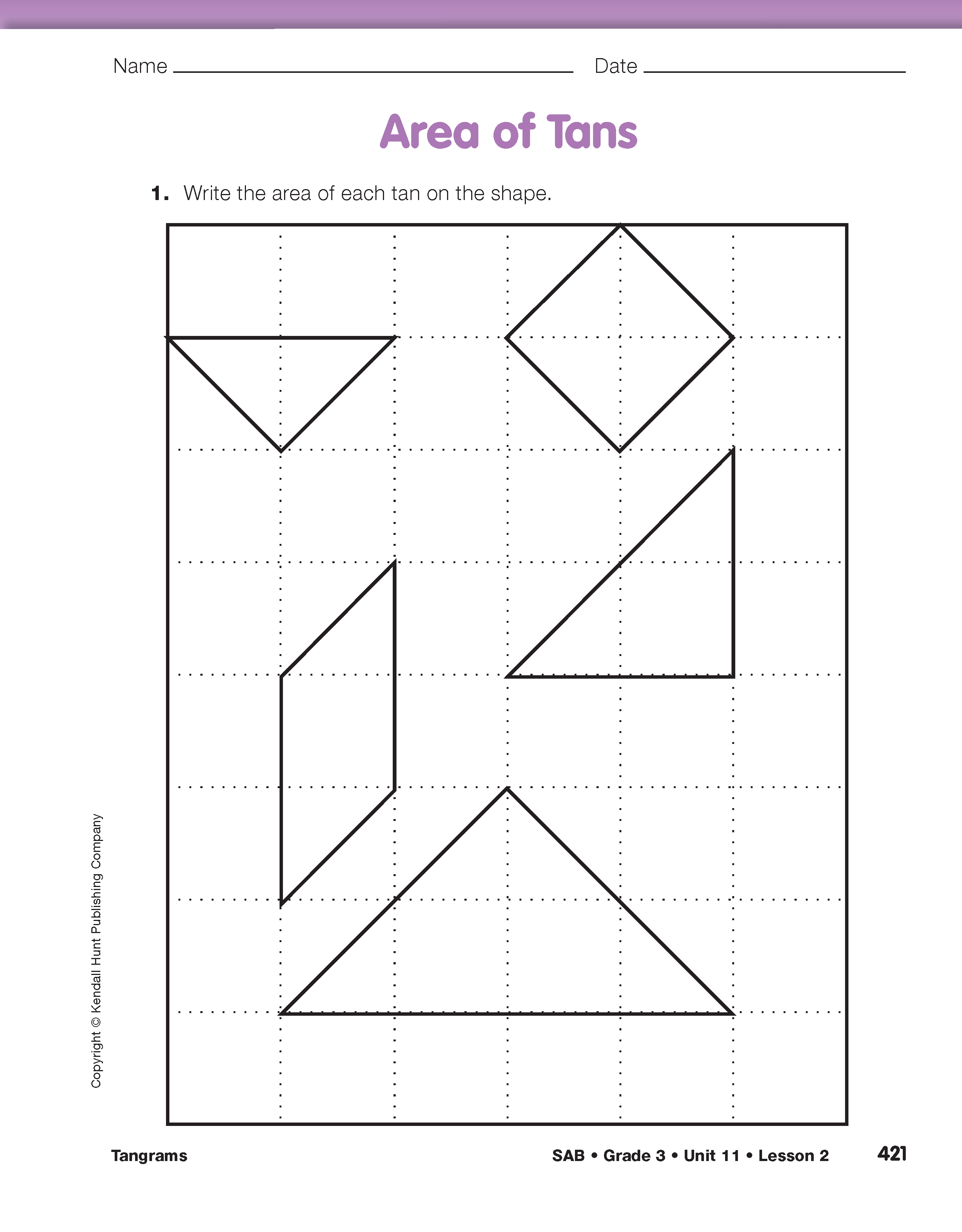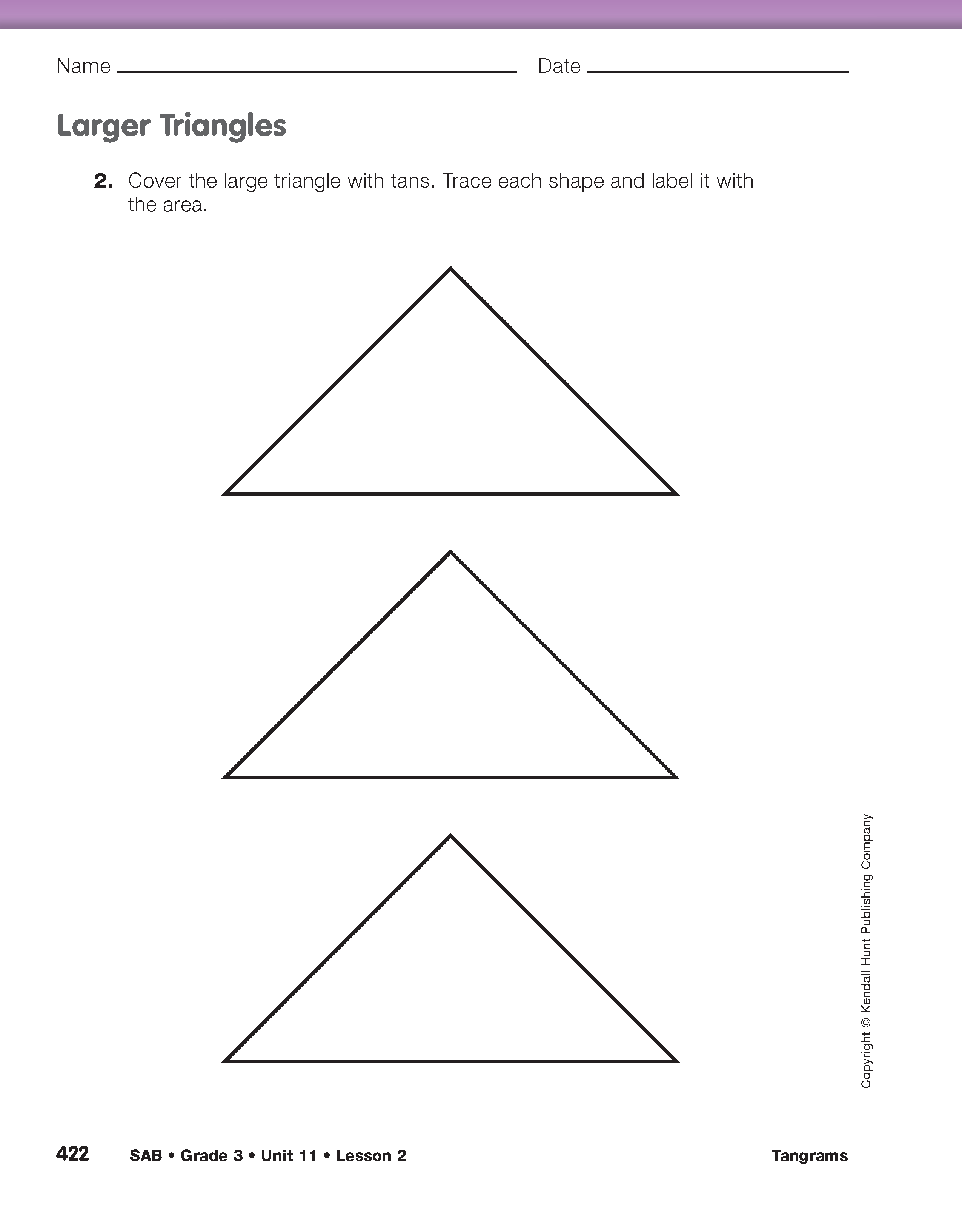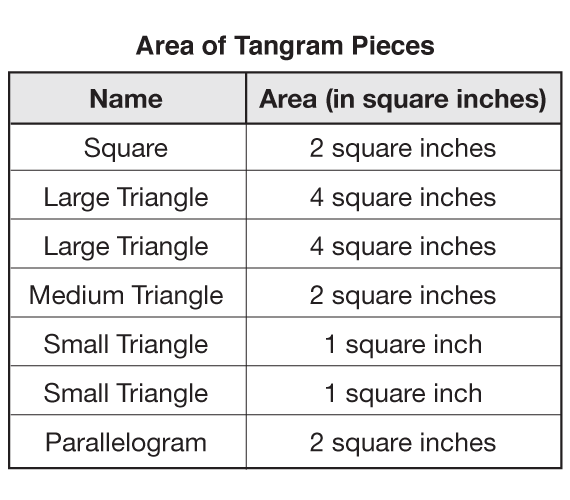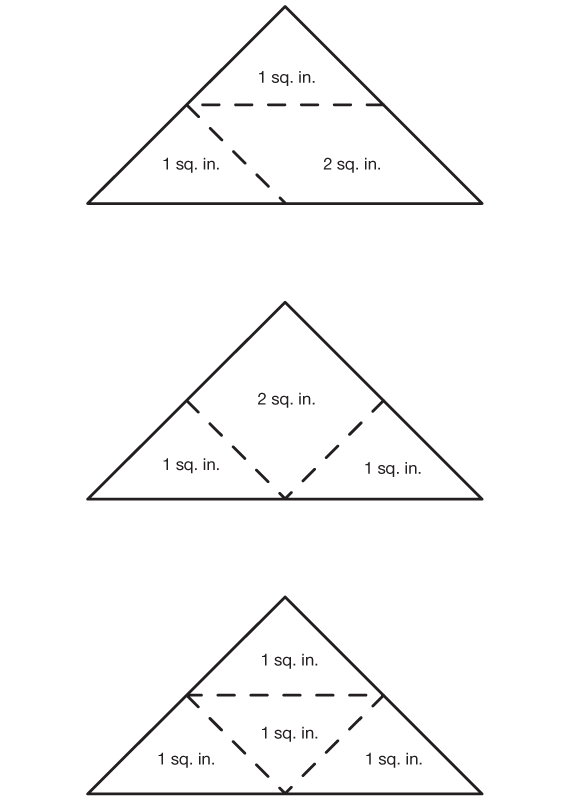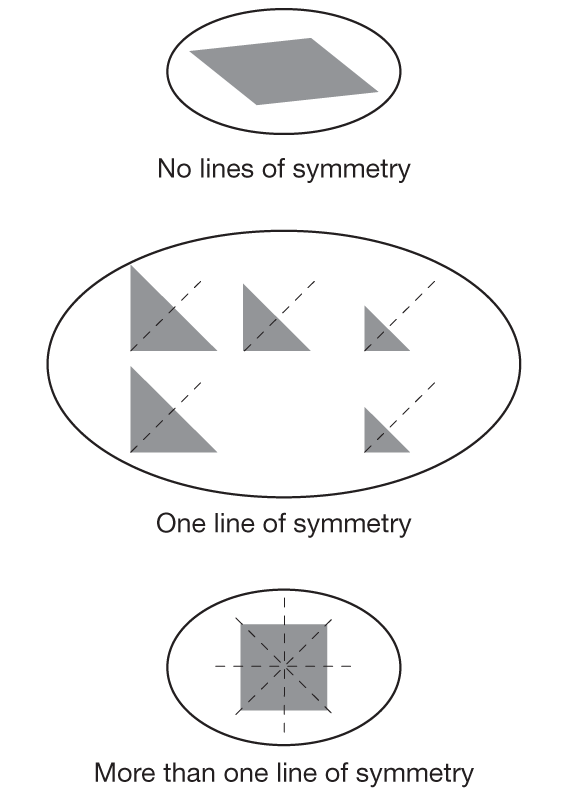Tangrams
Est. Class Sessions: 2–3Developing the Lesson
Part 2. Area of the Tans
Find the Area. Display and refer students to the Area of Tans page in the Student Activity Book. The students will use the square-inch grid on the page to find the area of each of the tangram pieces.
Ask:
Notice that the square is placed so the diagonals of the square are grid lines. In this way, we can see that the square is divided into four congruent triangles, where each triangle covers half of a one-inch square. Adding up the four half-square inches we find that the square has an area of 2 square inches.
Assign Question 1 and ask students to find the area of the other tans. When all the students have completed the task, collect area information for each of the tangram pieces. Complete the Area of Tangram Pieces chart you prepared as the students share their information. (See Materials Preparation. See Figure 5 for a completed chart.) If there are discrepancies, students can show their work on a display and discuss where an error was made.
Verify the Area. Challenge students to verify the area of each shape another way by exploring the relationships between the pieces.
Ask:
Continue asking the same questions about the medium triangle and the large triangle so that students can verify their measurements.
Ask:
Direct students to the Large Triangles section of the Area of Tans page in the Student Activity Book. Assign Question 2. Students will find shape combinations that cover the large triangle, trace the shapes onto the outlines, and label the areas in order to verify the triangle's area of 4 square inches. Examples are given in Figure 6. When students are ready, ask them to share the shape combinations and to show how they verified the area.













